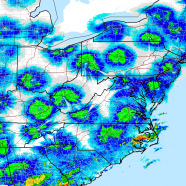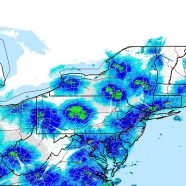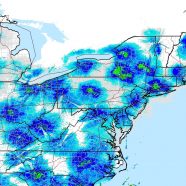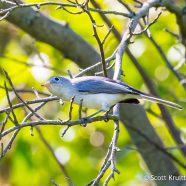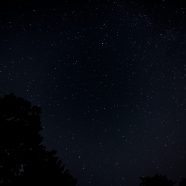Radar Migration September 11, 2016
Here we go again! The cold front that passed through the region this weekend has ushered in a strong northwest flow, and our birds are on the move – get out there tomorrow and enjoy it.
Read MoreRadar Migration September 1, 2016
Happy September! Kick yours off with a great day of birding tomorrow and hopefully Saturday as the birds head out on the northerly flow behind the finally departed front. Once we get to Sunday the weather gets intriguing with Tropical Storm Hermine making a run to the Northeast and likely impacting conditions throughout the region. Remember that when looking at this radar capture the darker the blue, the more birds in the air. Green is even more intense and heavy migration. The birds appear to be basically centered around radar stations because the radar beam rises through the atmosphere as...
Read MoreRadar Migration August 29, 2016
Today’s cold front cleared the Northeast region, and tonight’s light north winds are predictably pushing migrant birds to the south. Wake up early to spot some songbirds, head to the beach to sight the shorebirds, or pop out midday to see some raptors moving south on the diurnal winds. Good birding to you, autumn lovers!
Read MoreBlue-gray Gnatcatcher (Polioptila caerulea)
I mentioned Blue-gray Gnatcatchers (Polioptila caerulea) as a current migrant in a recent post, and I photographed this bird doing just that this morning. The wheezing individual shown here was at a migratory stopover site and may have continued flying not long after I snapped this shot. Blue-gray Gnatcatchers are at least partially diurnal migrants, and if you are lucky you can find small flocks of several birds heading south together on a day like this one. August may be the middle of summer to us but it is well into fall for the birds. Safe journey, pretty friend! Keep flashing that tail...
Read MoreThe Big Dipper
Can you spot the Big Dipper just above the horizon between the trees? It can be hard to believe in the midsummer heat but birds are already migrating south for the winter both during the day (various swallows to Eastern Kingbirds to Blue-gray Gnatcatchers) and the night (Red-eyed Vireos to Indigo Buntings to Black-billed Cuckoos). Those nocturnal species use various methods to help them move around our planet – some may use a coastline, others the Earth’s magnetic field, and like people, certain birds gaze at the stars. Various species take in the night sky as a map, just as we...
Read More



